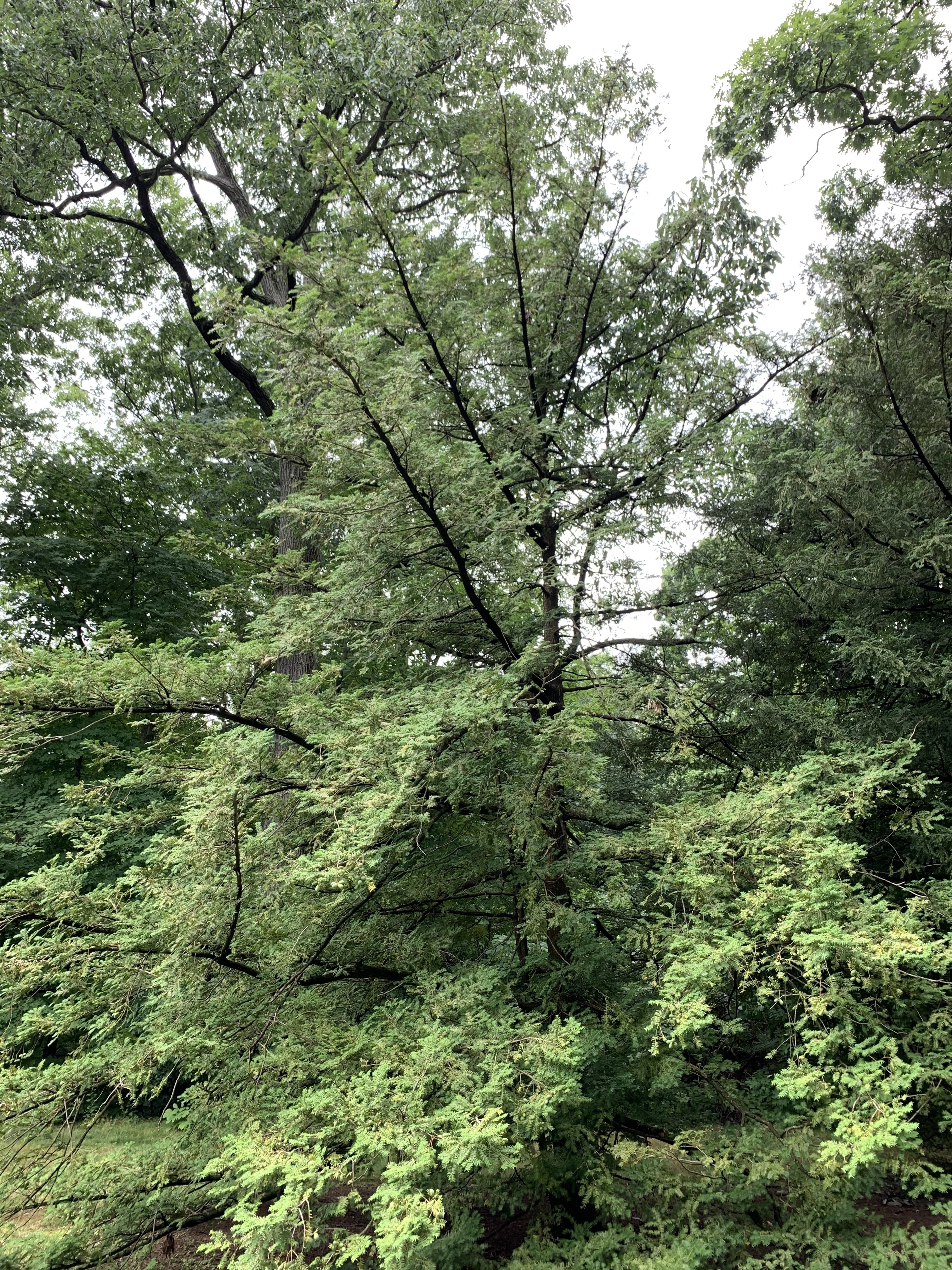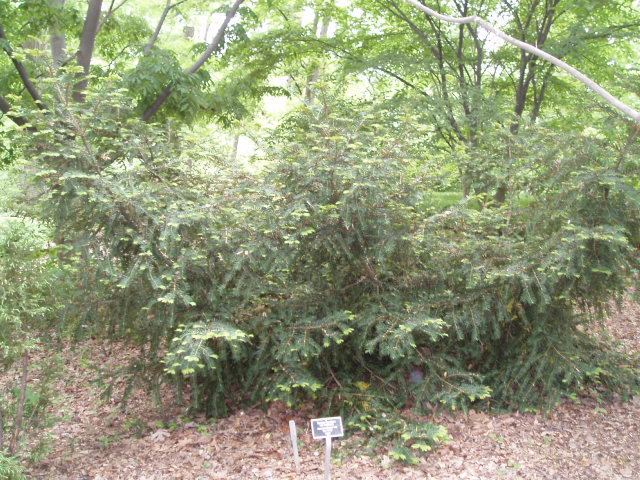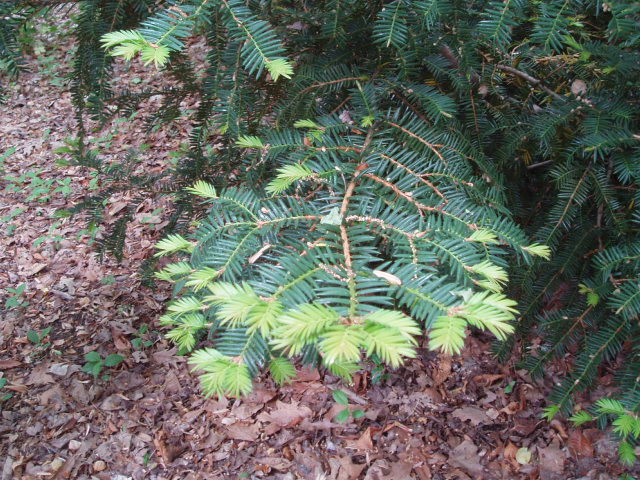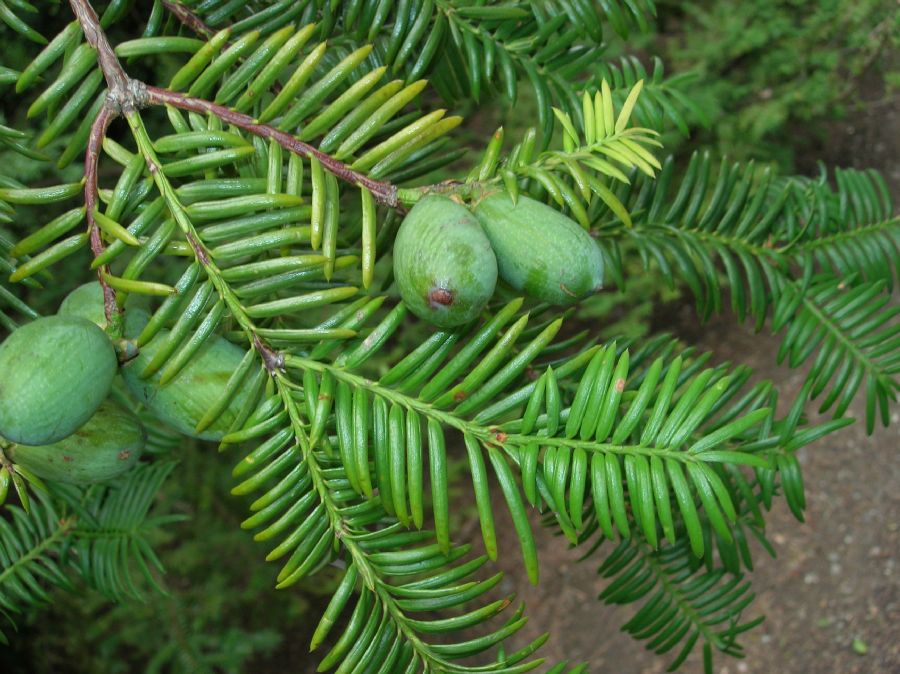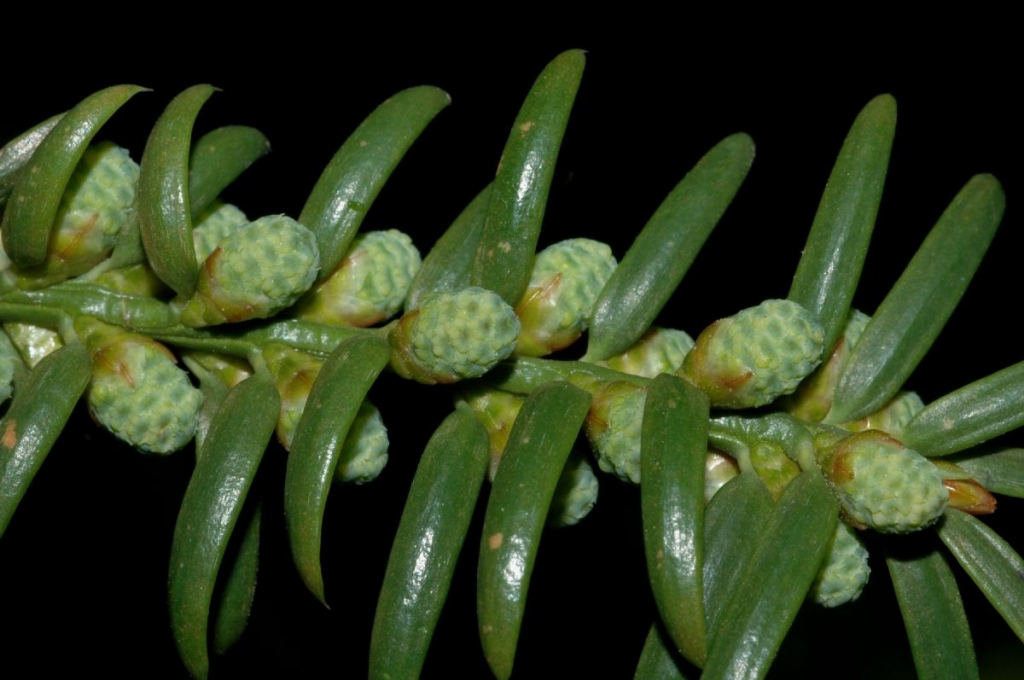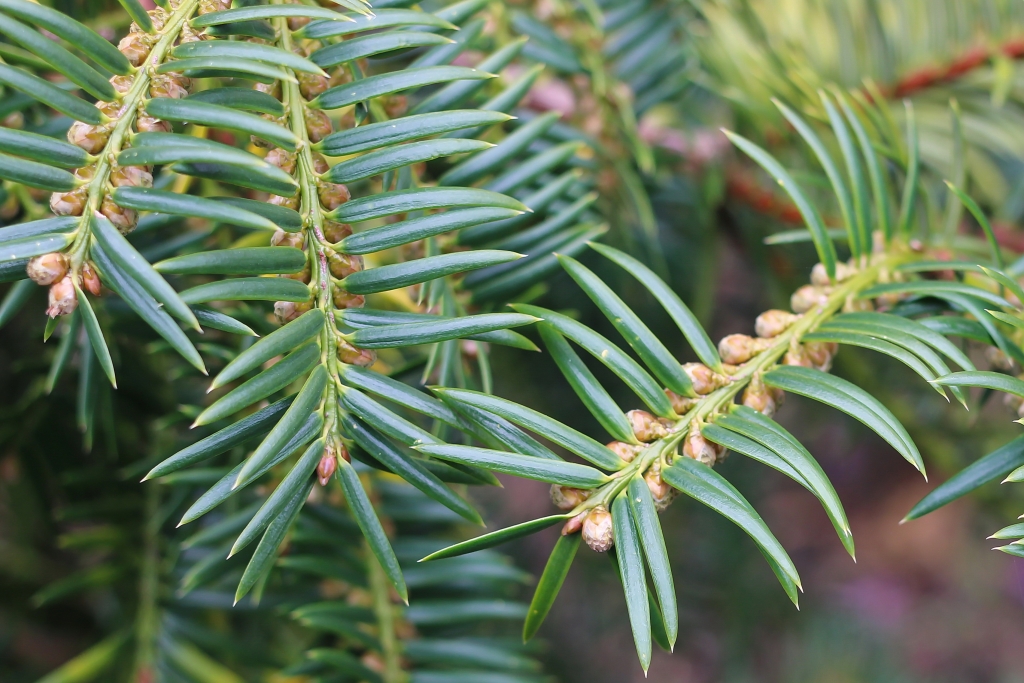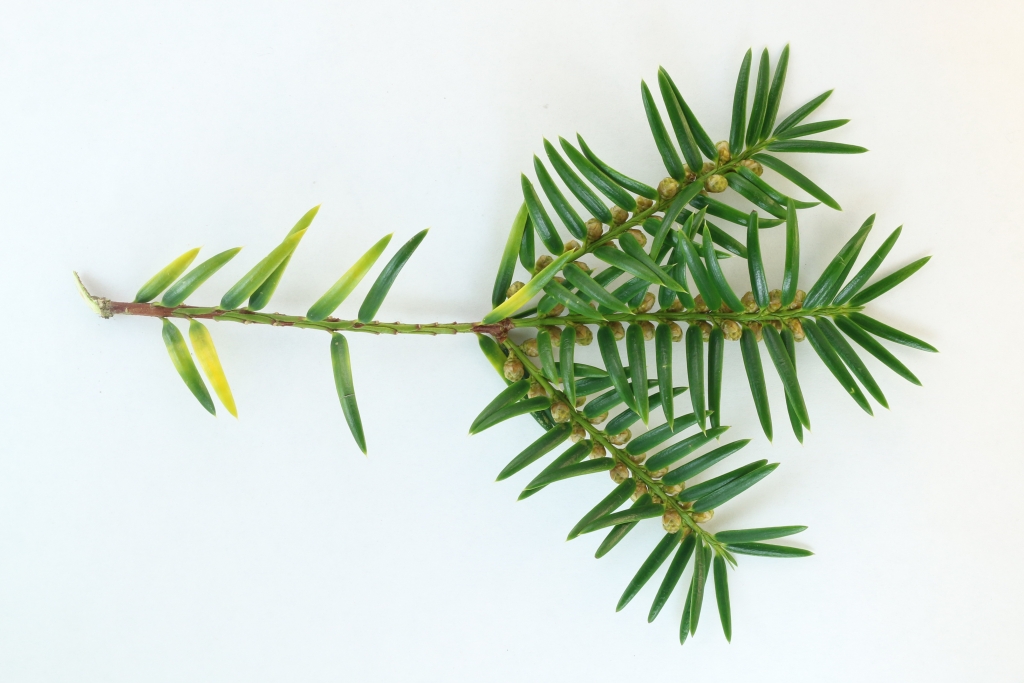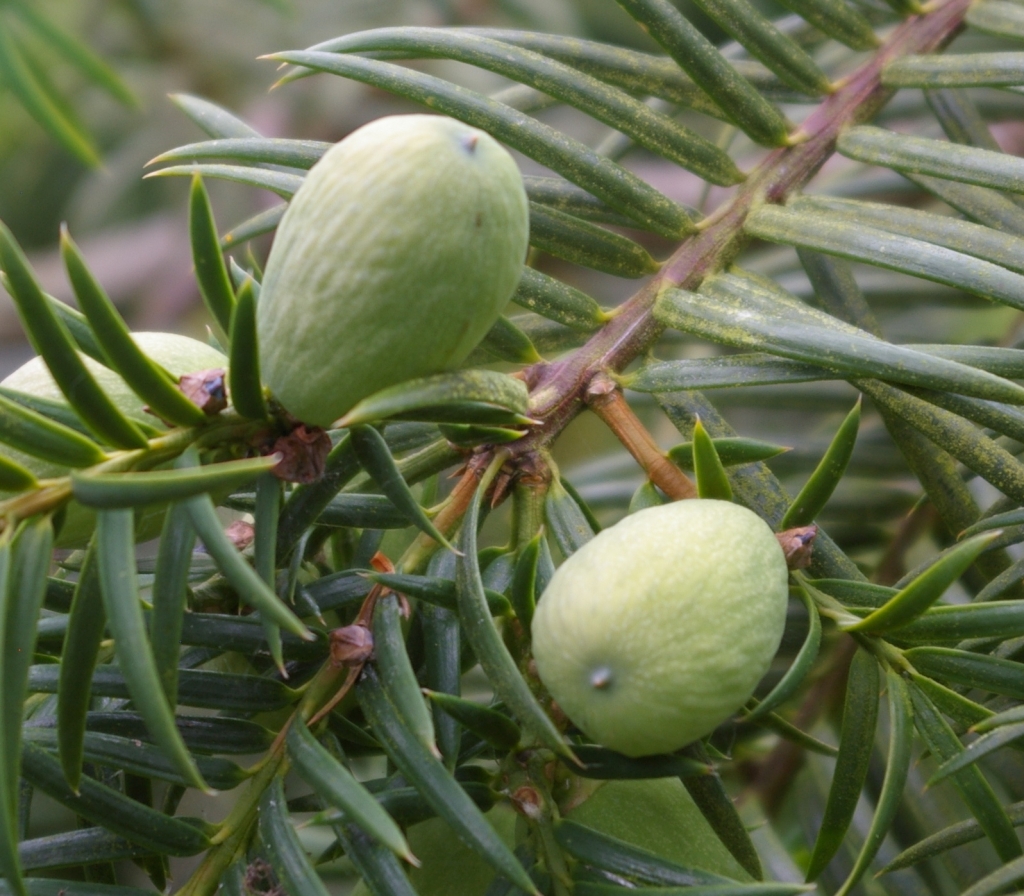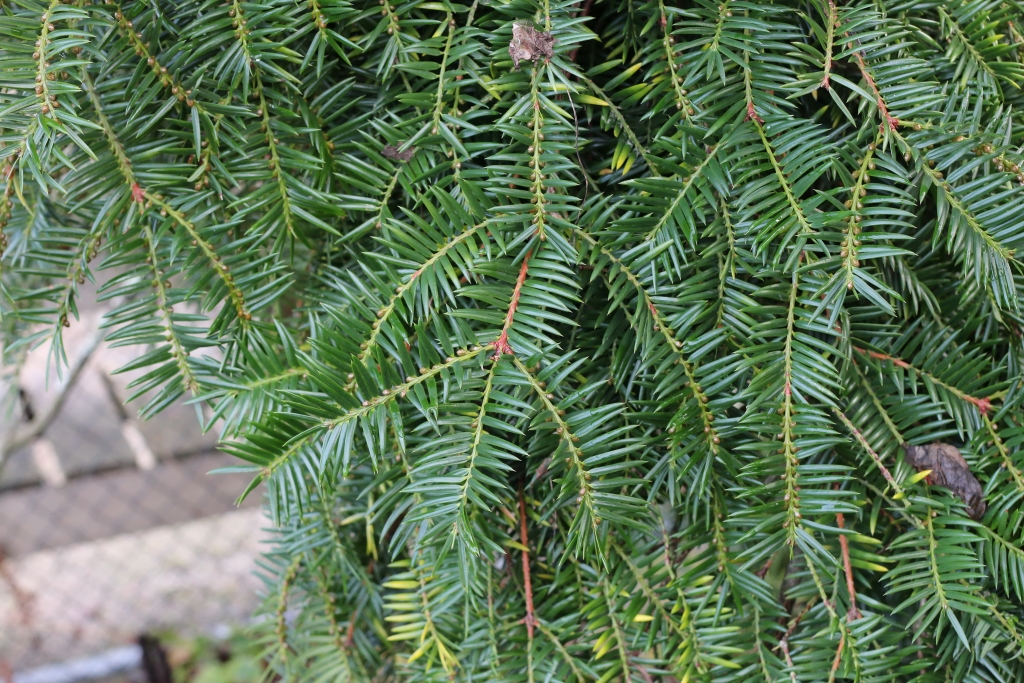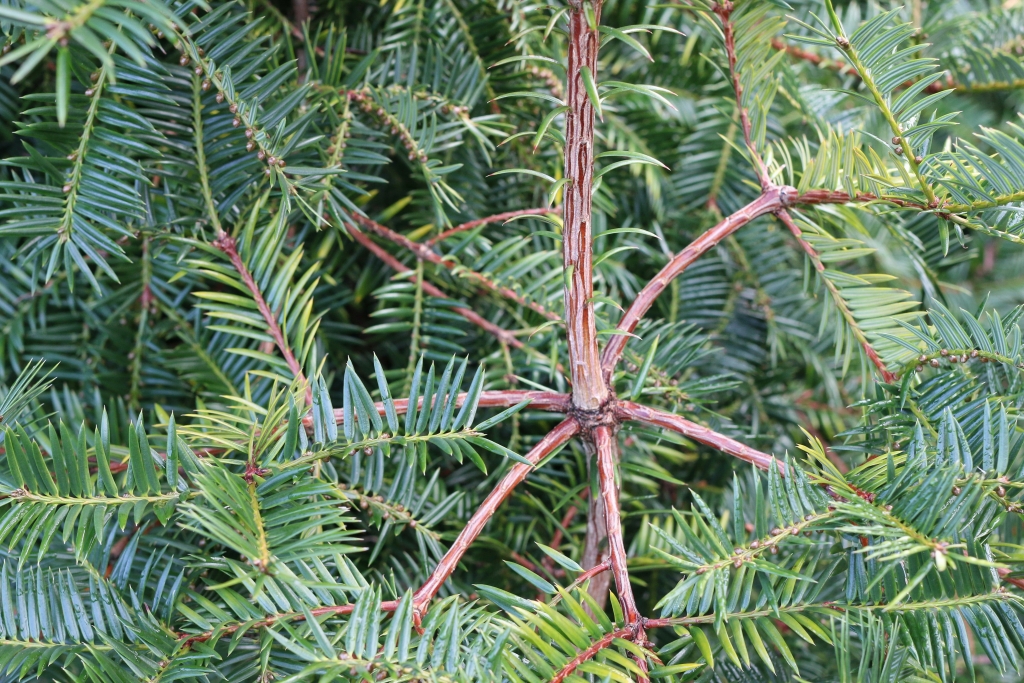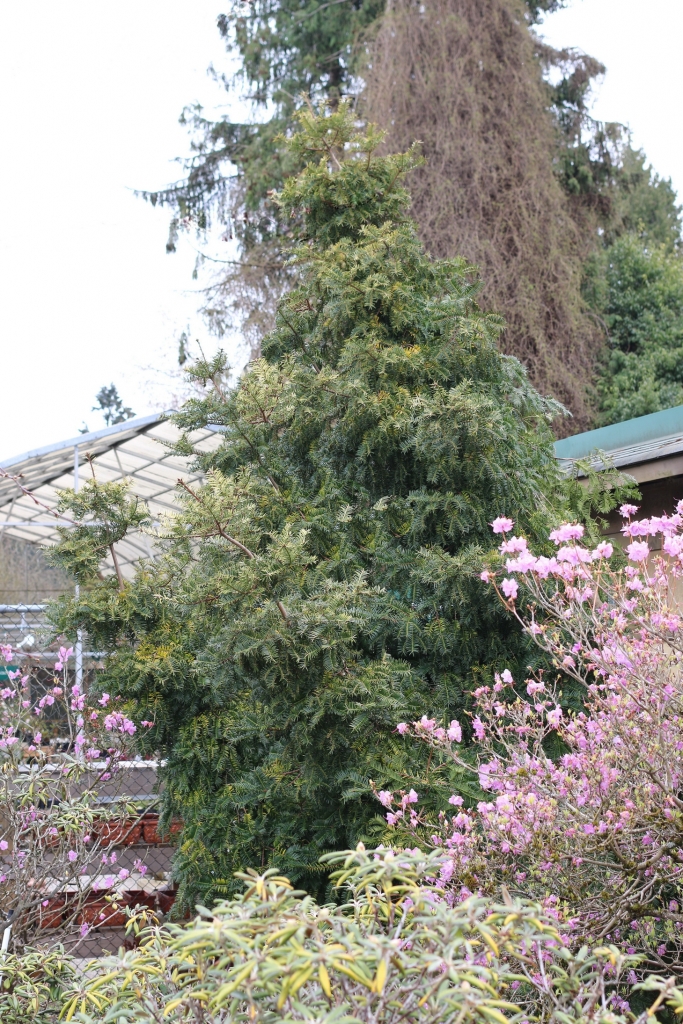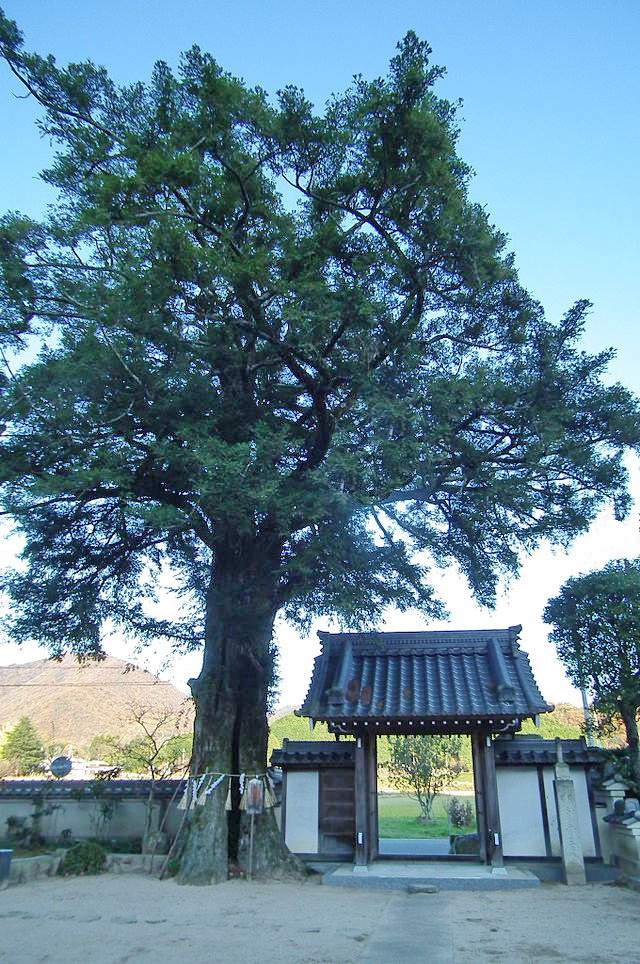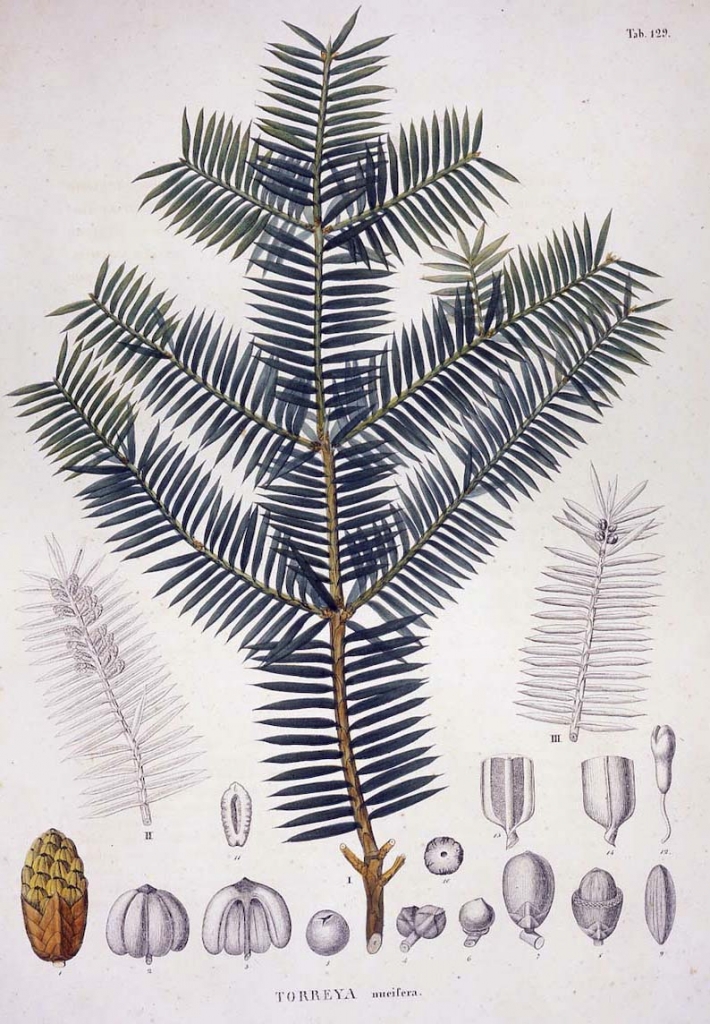
Torreya nucifera, as described in 1946 by (L.) Philipp Franz von Siebold (1796-1866) and Joseph Gerhard Zuccarini (1790-1848), in Abhandlungen der Mathematisch-Physikalischen Classe der Königlich Bayerischen Akademie der Wissenschaften, 4th edition, is commonly known as Japanese nutmeg-yew, as well as 榧 (kaya) in the Japanese language. This appears to have been the first described species of Torreya, described and illustrated by Kaempfer in 1712 under the name Taxus nucifera, subsequently adopted by Linnaeus into his Species Plantarum in 1753. The species name is from the Latin language, meaning "nut-bearing," referring to its edible and highly regarded seeds.
Ethnobotany. This conifer yields edible seeds and cooking oil. It is commonly planted as an ornamental in North America and Europe. In 1916, E.H. Wilson wrote that "the wood is yellowish to pale brown, firm and lustrous and durable in water. It is used for making water-pails and for cabinet-work." It was traditionally used to make go-boards and bowls, but the tree is now protected and the wood is sourced only from natural mortality, so fine modern go-boards are mostly made from other stable softwoods with good figure and pale grain, such as species of Agathis or Picea.
Description. Japanese nutmeg tree is a slow-growing, evergreen coniferous species of tree which will grow to mature heights of 50 to 80 feet (15 - 25 m) tall with a trunk up to 5 feet (1.5 m) in diameter, measured at breast height. It is a subdioecious plant, with individual trees producing either mostly male or mostly female cones, but usually with at least some cones of the other sex present.
Hardy to USDA Zone 5 - cold hardiness limit between -20° and -10°F (-28.8° and -23.3°C).
